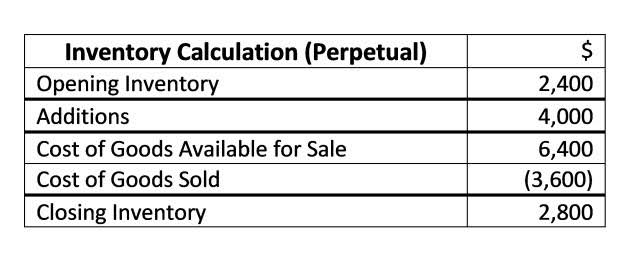Economic growth momentum seems unlikely to accelerate significantly in the near term, with higher-frequency survey data remaining weak. Investors prefer growth assets such as equities in a growing economy. Bear markets have varying effects on different parts of your investment portfolio. Stocks typically take the biggest hit — that’s what defines a bear market, after all.
Bear markets can be triggered by economic recessions, high inflation, interest rate hikes, or global crises like the 2008 financial crisis or the COVID-19 pandemic. Price inflation may be a problem when the economy is booming, although inflation during a bear market can still occur. High demand for products and services in bull markets can cause prices to rise, and shrinking demand in bear markets can trigger deflation. Both bear and bull markets will have a large influence on your investments, so it’s a good idea to take some time to determine what the market is doing when making an investment decision. Remember that over the long term, the stock market has always posted a positive return. Bull markets tend to be longer than bear markets, although the duration can vary.
How to Profit from a Reverse Stock Split?
Let’s look at what happens when the market takes a downturn, a bear market. On the contrary, the economy in a bearish market will either fall or not grow at all. A key point to remember is an indicator like the GDP (Gross Domestic Product) will give you a bird’s eye view of how the economy is performing based on the existing factors. If you’ve ever heard terms like „bear market” or „bull market” tossed around, they’re more than just investing slang. Understanding these two market phases is important for making informed decisions about your investments.
What people Reading
The investing strategy of dollar-cost averaging helps to smooth out the high and low prices of a stock. For now, high US stock valuations amid higher inflation and lower corporate profitability may be a reason for investors to consider international diversification. “Whenever the US has experienced a fall of more than 10%, other equity markets also fall — even if, on occasion, Day trading patterns they outperform on a relative basis” Oppenheimer writes. US stocks have consistently outperformed their peers for nearly 15 years, leading to high valuations. But the recent equity declines, which started in the US, reversed this trend.
Take, for example, the burn tech stocks felt from the rising inflationary heat in the past couple of months as an evident sign of a bearish market. This is because, due to their dependence on future cash flows, technology stocks are generally seen as particularly vulnerable to negative market moods caused by inflation. They hopped on the layoffs bandwagon in order to stay afloat as their stocks plummeted, thus entering bearish territories. Throughout history, shifts in supply and demand have led to some of the most notable bull and bear markets. Let’s look at key historical examples to see how these market cycles have played out over time.
And so, share prices of dotcom stocks lost over 80 percent of their value. Elsewhere, delistings and bankruptcies contributed to 13-figure losses on investors’ portfolios. When business profits drop, shareholder earnings take a hit, and so do employment opportunities. The diminishing spending power could force investors to start selling assets, thereby triggering a price fall.
Bulls vs. Bears – How Debt and Equity Investments Perform in Each Market Phase
- But crafting and adhering to a clear long-term investment strategy could help you ride out whichever way the market’s going.
- Others have further suggested that boom periods exceed their opposites in every other respect (frequency of occurrence, degree of change in value, etc).
- If you’ve ever heard terms like „bear market” or „bull market” tossed around, they’re more than just investing slang.
- When investors worry about the future, they may sell stocks, potentially triggering a bear market.
- Cutting to the chase, you’re better off investing whenever you have funds available instead of trying to pinpoint an opportune moment.
It’s a natural instinct to want to immediately respond to a loss in value, so skirt around that knee-jerk reaction by checking up on your investments as little as possible. Given that the RBI has shifted policy stance to accommodative, further rate cuts will likely follow in 2025. Indian corporate balance sheets What Is a Stock Index remain healthy, with leverage ratios close to decade lows and growth prospects steady. Amidst the volatility, Indian corporate bonds could be the best-performing asset class over the next three to three years. Most global markets experienced a bull phase following considerable capital infusion during the pandemic.
- Over 60% of participants anticipate further challenges ahead, viewing this year’s stock market surge as a mere bear market rebound.
- Bear markets can be challenging, but their name has an interesting origin.
- Our content is packed with the essential knowledge that’s needed to help you to become a successful trader.
- While we’ve experienced multiple recessions since then, we haven’t had another economic depression of that magnitude.
- If you’re approaching the end of your investment timeline (a.k.a. you’re a few years away from your target retirement date), you have less time to recover from bear market dips.
- But a bear market doesn’t always indicate that a recession is coming.
Similarities Between Bear Market and Bull Market
Conventional wisdom suggests that buying low and selling high is the best way to profit from stocks. When the market starts to rise, people get excited – somewhat irrational, and pour more and more money into the market. And with a life of more than a decade, it was twice as long as the average bull run of the post-WWII period.
The Great Depression of the 1930s saw unemployment reach 25% and lasted about 10 years. While we’ve experienced multiple recessions since then, we haven’t had another economic depression of that magnitude. Many withdraw their investments, shifting funds to cash or fixed-income assets, reducing overall liquidity in the market. A market downturn is when you want to limit losses and, if possible, take advantage of lower asset prices. Typically, an investor should take a different approach to managing their portfolio during a bull market.
What Are the Common Misconceptions About Bull and Bear Markets?
Economic stimulus can accelerate the turnaround, helping the market put in a higher trough than it otherwise would have experienced. Low interest rates thinkmarkets broker review and stimulus allow the companies that survived the bear market to grow earnings. The Economic Cycle explains the interplay between bull and bear markets. Technically, a bear market begins once a bull market has hit its high point, and a bull market begins when a bear market puts in a bottom.
No representation or warranty is given as to the accuracy or completeness of this information. It does not constitute financial, investment or other advice on which you can rely. Any references to past performance, historical returns, future projections, and statistical forecasts are no guarantee of future returns or future performance.
The bear market of March 2020, at the onset of the pandemic, is the shortest on record. The S&P 500 plunged more than 30% in just 33 trading days before rallying to new highs within four months. This rapid recovery was largely due to unprecedented fiscal stimulus and monetary policy support, along with investors’ desire to quickly reenter the market after such a steep decline. The downturn was driven in part by falling prices among the largest US technology companies. The sharp falls in some of these tech names resulted in a bigger hit to US stocks than to other global stock markets and indexes.
Since World War II, it has taken about two years on average for the stock market to recover, or reach its previous high. The most recent bear market, which started in March 2020, was exceptionally short, ending in August when stocks closed at record highs. The previous bear market, the Great Recession, on the other hand, didn’t see a recovery for about four years. Still, a bear market can cause significant short-term losses for investors.
















